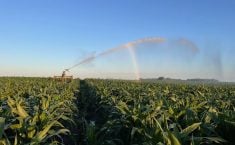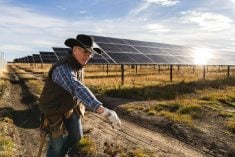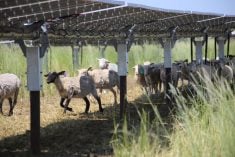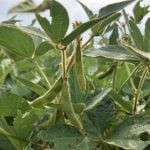The province’s booming renewables industry will not be a threat to Alberta’s agricultural or environmental industries, said a report released by the Alberta Utilities Commission.
If all renewable development locates on (some of Alberta’s best) land, the percentage of agricultural land loss is estimated to be less than one per cent by 2041, said the Alberta Utilities Commission report released, Wednesday, March 13.
The Alberta Utilities Commission addressed concerns that solar and wind facilities could leave landowners and the public with bills for reclamation when the facilities are no longer in use.
Read Also

Grazing ‘sweet spot’ boosts pasture performance
Timing-focused approach to pasture management touted to boost forage growth, livestock gains while also cutting farmer labour and inputs
In comparison to other forms of industrial development, renewable plant projects have relatively contained reclamation risks, said the report. The risks with groundwater and off-site contamination are generally low.
The report is the first of two reports the United Conservative government asked the commission to produce to investigate Alberta’s booming solar and wind power industry. This report comes shortly after the United Conservative Government removed its six-month moratorium on approvals for new renewables generation.
The report found renewable power is much less of a threat to the province’s farmland than other forms of energy development and urban spread.
From 2019 to 2021, the largest driver of agricultural land loss was expansion of pipelines and industrial sites, said the report. Other key drivers include urban residential developments, mines, wells, and roads.
The report said the proliferation of wind and solar projects will likely be more concentrated in some parts of the province than others.
The report also noted most of the wind and solar sites are located on poorer land. Wind farms use about five per cent of their lease area, leaving the rest available for grazing or suitable crops.
The report calls for more research on combining agriculture and renewable energy and said that current rules are adequate to ensure reclamation.
















